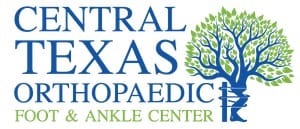Top Sport Injury Diagnoses
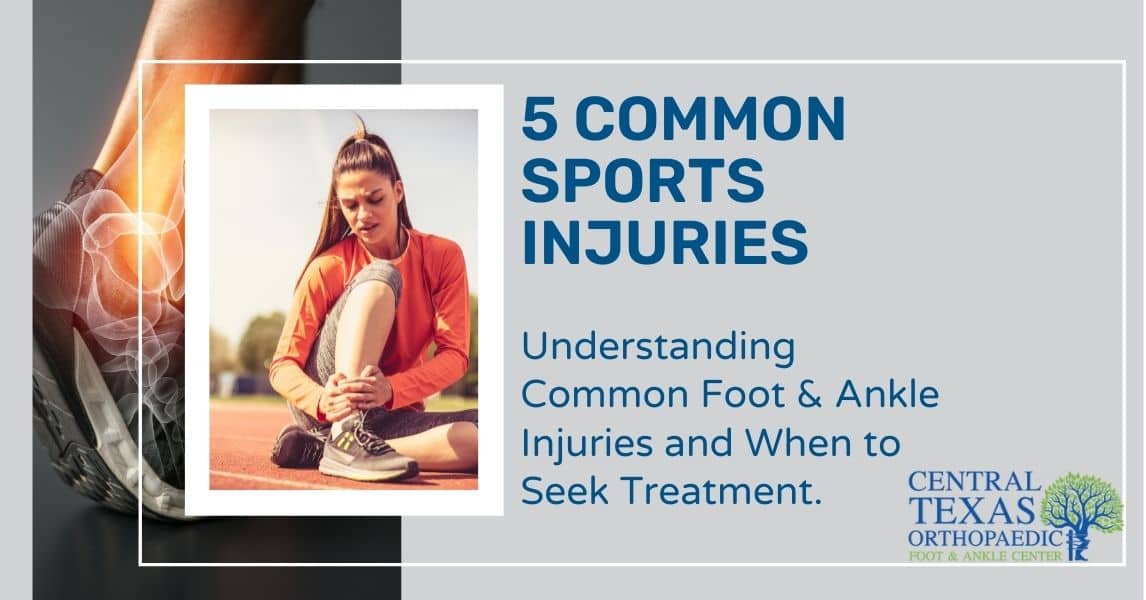
5 Common Sports Injuries of the Foot and Ankle
From early mornings at the gym to late nights on the field, athletes are consistently pushing their body to the limit. Whether you are an athlete who plays professionally or for fun, there is always an inherent risk of injury. While you can’t prevent all injuries, it’s important to be aware of the most common injuries and to have a good understanding of when to seek medical attention.
Below are 5 of the most common sports injuries affecting the lower body with possible causes and symptoms.
1. Shin Splints
Shin splints account for an estimated 10.7 percent of injuries in male runners and 16.8 percent of injuries in female runners.
What is a Shin Splint?
Shin splints is the term for pain that occurs in the large bone on the front of your lower leg. Shin splints cause swelling or soreness in the lower part of the leg, pain along the tibia, lumps or bumps on the skin. In progressed cases, there may even be red patches on the skin that appear around tender areas.
Common Causes:
Shin Splints often occur from excessive running or workouts. Many athletes such as distance runners, football players, and basketball players find themselves with shin splints at some point in their athletic career. Any sport that involves excessive pressure on the legs or running can make an athlete susceptible to lower leg pain, especially shin splints.
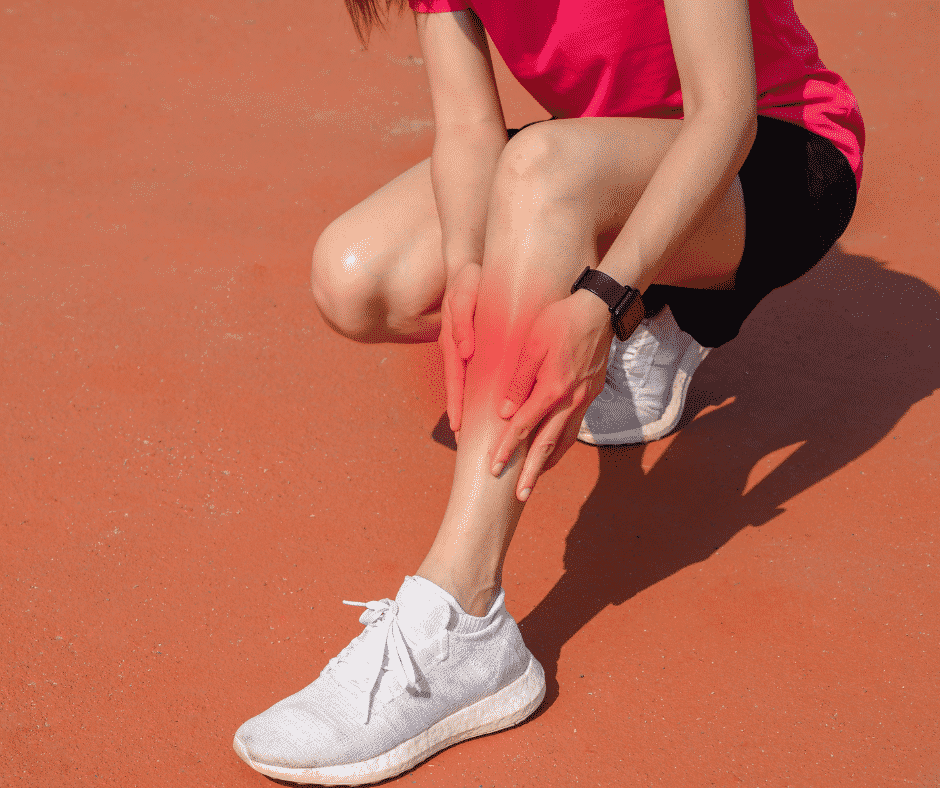
Treatment:
Getting a good amount of rest can positively impact healing in the early stages of a shin splint diagnosis. Self care such as icing, correcting your foot wear, and performing proper stretches can help with long term improvement. One of the simplest things you can do is to ensure you are wearing the appropriate footwear for the sport you are participating in. Sometimes, custom orthotics can correct the issue causing the pain. It’s important to have this pain evaluated by an orthopaedic doctor as soon as possible to evaluate the condition for treatment as other conditions can present with similar symptoms.
2. Bone Fractures
Fractures are very common in all age groups but athletes are at a greater risk. On average, every person will experience two broken bones over the course of a lifetime. However, athletes are at a higher risk because of the potential for overuse and pressure on specific parts of the body.

What is a bone fracture?
A bone fracture is when there is a break in a specific bone. Fractures can occur in any bone in the body, but the most common fractures are typically in the leg, foot, and ankle. Different types of fractures include open and closed fractures, stress fractures, complete or partial fractures and displaced fractures.
Common Causes
Fractures often occur from overuse and specific bones that receive too much force and pressure. The tibia is a weight bearing bone and is often fractured as a result of a fracture of the fibula; this occurs because the pressure and force is transferred to the tibia. Lower leg fractures are acute, sudden onset fractures and normally caused by a direct impact, twisting or trauma. Stress fractures develop more gradually over time as a result of overuse.
Treatment
When a fracture occurs, immediately get to an emergency room to see a medical professional. There are several methods to heal fractures to include setting your leg, immobilization, medications, and therapy.
3. Achilles Tendon Injuries
What is an achilles tendon injury?
The achilles tendon is a fibrous cord that connects the muscles in the back of your calf to your heel bone. If the tendon is overstretched and overused it can tear or rupture completely.
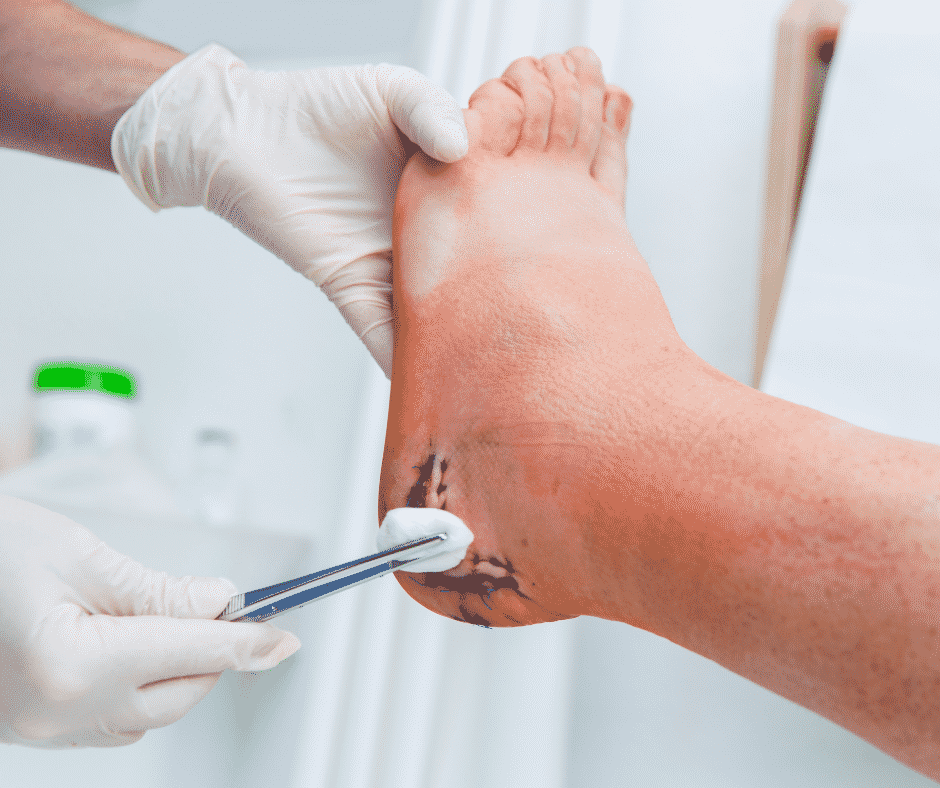
Common Causes
A rupture or tear can occur from excessive pressure on the tendon such as jumping and falling from far heights. High intensity sports are common causes of achilles tendon injuries. Such as soccer, basketball, and tennis all involve quick jumping and sudden movements. Symptoms include severe pain and swelling near the heel, inability to stand, and hearing a pop sound when the injury occurs.
Treatment
It is best to see a medical professional immediately if you hear a pop in the heel. Often surgery is needed depending on the condition of the torn tissue. Rehabilitation after surgery is highly recommended to ensure a full recovery. The best prevention methods are to strengthen and stretch the calf muscles, avoid running on slippery and hard surfaces, and slowly increase workout intensity.
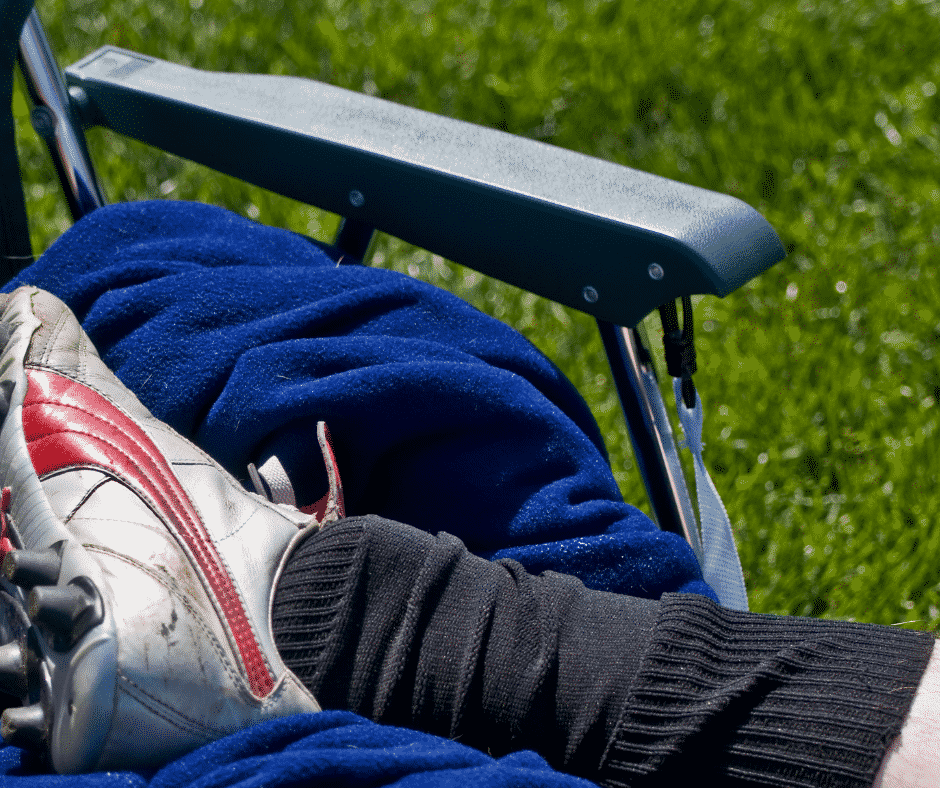
4. Dislocation
What is a dislocation?
A dislocation occurs when the tendons that run under the outside of a specific bone slips out of place, as a result of acute or chronic twisting injuries. This can lead to weakness and instability in different limbs on the body. Dislocation commonly happens in the shoulder and ankles.
Common Causes
Occurs from trauma that forces a specific bone or joint to move out of place. Contact sports such as wrestling, football, or hockey are high risk sports that can cause dislocation.
Treatment
Non-surgical treatment can be through immobilization, rehabilitation and injections that can be given from a professional physician.
5. Strains and Sprains
The most common injury in all sports and activities are strains and sprains. Approximately 1 million ankle injuries occur each year, and 85 percent of them are sprains. This occurs so often because many people do not understand their range of motion, therefore causing stress on certain ligaments.

What’s the difference between a strain and sprain?
A sprain is a stretching or tearing of the ligaments that connect the bones. A strain is a stretching or tearing of the tendons and muscles. Range of motion and flexibility are two factors that can affect risk of strains and sprains. Limited range of motion can cause long term pain in extensive sports. Sprains and strains often occur in the ankles, feet and legs.
Common Causes
Any sport that has high impact running or activity is at risk of being diagnosed with this injury. Sports such as tennis, soccer, football, wrestling, are at higher risk of injury. Symptoms can be pain in the area of the pull, swelling, or not being able to apply pressure on the area.
Treatment
Rest, ice, compression , and elevation (RICE) is a short term treatment recommendation. Before extreme activity, stretching and focusing on flexibility is great for injury prevention. Also, receiving medical attention or advice is always a great option to prevent long term need for surgery
Wrapping Up
Knowing the most common sports injuries allows you to understand what could occur from accidents or overuse and help you create a plan for prevention as well as understand when to seek treatment.
Our team at Central Texas Orthopedics treats a variety of sports injuries and foot and ankle pain. With the help of CTX Foot and Ankle Center you are going “tibia” okay. Book an appointment today.
